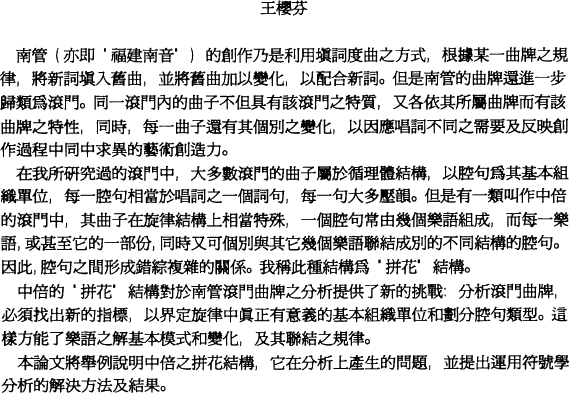Article contents
The “Mosaic Structure” of Nanguan Songs: An Application of Semiotic Analysis
Published online by Cambridge University Press: 07 March 2019
Extract
In nanguan, a Chinese art music tradition, musicians compose songs by setting new texts to existing tunes (known as qupai); songs that are composed based on the same tune display the relevant features of that tune but vary in its non-relevant features.2 Tunes are further grouped by musicians into tune families3(gunmen); songs that are composed based on tunes of the same tune family display the distinctive features of respective tunes but share the features of that tune family.

- Type
- Articles
- Information
- Copyright
- Copyright © 1992 by the International Council for Traditional Music
Footnotes
An earlier and shorter version of this paper was presented in the session on “approaches to analysis” at the ICTM conference in Hong Kong, July 1991. Much of the material is drawn heavily from chapter 2 of my dissertation (Wang 1992). The research and writing of my dissertation was supported by Andrew Mellon Predoctoral Fellowship at the University of Pittsburgh, and by a Chiang Ching-Kuo Foundation Dissertation Writing Fellowship.
References
References Cited
- 2
- Cited by




